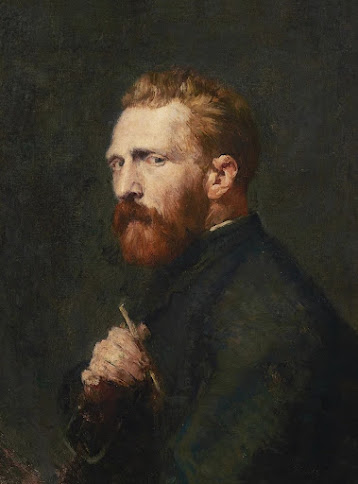Popular Post
Van Gogh's Artistic Brilliance Amidst Turmoil
Vincent Van Gogh, a luminary in the realm of Dutch post-impressionist painters, has entranced audiences for more than a century with the sheer brilliance of his artistic creations. His oeuvre, marked by vibrant hues, swirling brushstrokes, and emotionally resonant compositions, has firmly established him as one of the foremost artistic visionaries in history.
Despite the brevity of Van Gogh's life, the legacy he bequeathed comprises a staggering 2,100 artworks, among them some of the most iconic paintings ever crafted. The likes of "Starry Night" (1889), a mesmerizing portrayal of a night sky adorned with stars, the moon, and a quaint village nestled in a valley; "Sunflowers" (1888), a series of still lifes featuring lively yellow sunflowers set against diverse backdrops; "Irises" (1889), delicate blooms rendered in sweeping strokes of blue, purple, and white; and "The Potato Eaters" (1885), a poignant depiction of impoverished peasant farmers gathered around a table to partake in a meal.
Van Gogh's distinctive style is characterized by its bold colors, expressive brushwork, and an unwavering focus on emotion. Employing thick impasto, he applied paint directly onto the canvas, imbuing his works with a tactile quality. Though Van Gogh struggled to achieve commercial success during his lifetime, his enduring impact on the art world is indisputable. Regarded as a pioneer of modern art, his influence reverberates through the creations of countless artists who have walked the path he forged.
The narrative of Van Gogh's life is one etched with tragedy and the shadow of mental illness. Born in Zundert, Netherlands, in 1853, he exhibited an early proclivity for art. However, his journey to success was fraught with challenges, as he toiled as an art salesman, teacher, and preacher in his formative years.
In 1886, Van Gogh made the pivotal decision to move to Paris, a move that would significantly shape his artistic trajectory. It was in the vibrant artistic milieu of Paris that he encountered kindred spirits such as Paul Gauguin, whose influence left an indelible mark on Van Gogh's work. Amidst this period of artistic growth, personal turmoil also took root, with Van Gogh grappling with depression and anxiety. The infamous incident in 1888, where he mutilated his own ear, marked a tragic chapter in his life. Subsequently, Van Gogh sought refuge in a mental asylum in Saint-Rémy-de-Provence, where he continued to produce masterpieces, including the renowned "Starry Night."
In 1890, Van Gogh relocated to Auvers-sur-Oise, France, seeking proximity to his brother Theo. Despite this attempt at stability, his mental health continued to decline, culminating in the tragic event of July 27, 1890, when he took his own life. His death was a profound loss to the art world, robbing it of a brilliant mind ahead of its time. Van Gogh's enduring legacy, however, continues to inspire and captivate people worldwide.
Recent advancements in technology have provided fresh insights into Van Gogh's life and art. X-ray scans have unveiled hidden layers within his paintings, while chemical analysis has illuminated the pigments he employed. This research has not only enhanced our understanding of Van Gogh's creative process but has also dispelled certain long-standing myths.
Contrary to the perception of Van Gogh as a deranged artist incapable of rational thought, recent findings portray him as an intelligent and thoughtful individual. Moreover, he demonstrated acumen as a skilled businessman, sustaining himself financially through his art.
Van Gogh remains a complex and intriguing figure—a brilliant artist entwined with deep internal struggles. His life and work persist as subjects of ongoing research and debate, yet there is no denying that he stands as one of the preeminent artistic figures in the annals of history.

Posted by Kot Sarhang
Welcome to Unleashing Imagination, where creativity knows no bounds! Join me as I take you on an exciting journey filled with captivating content, engaging discussions, and entertaining adventures. Get ready to be inspired, informed, and entertained. Let's create unforgettable moments together!You may like these posts
Most Popular
Subscribe Us
Ad Code
Popular Post










0 Comments